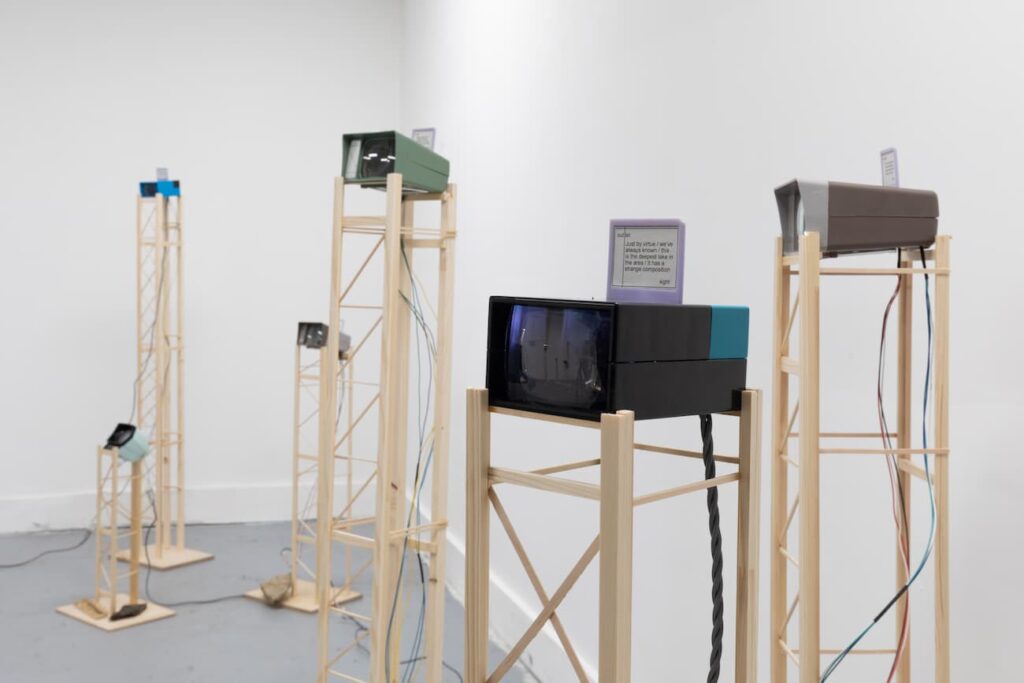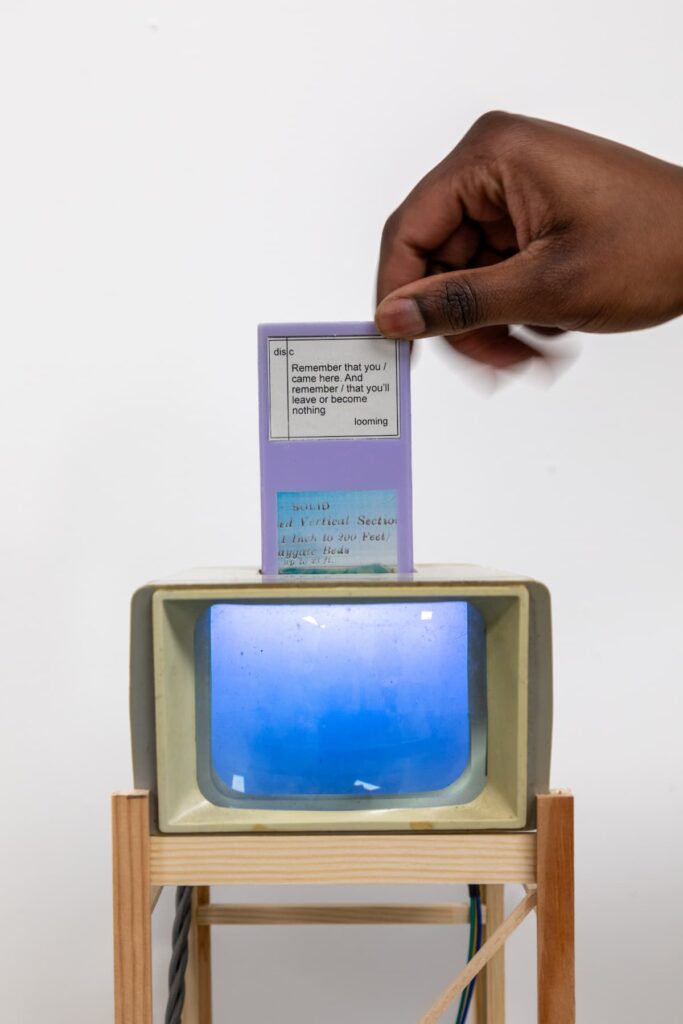Return to Dreamphone:
water slides

There are towers on the horizon, or are they monoliths? Remnants of an earlier age?
They send out signals that you can sometimes sense, sometimes the only sign is birds drawing shapes overhead.
Like the city even further off, you cannot seem to reach these towers, only use them to navigate by.
Water Slides in an interactive installation inviting participants to scan a shifting horizon. It exists as a series of eleven interconnected viewing towers circling the viewer. Each tower gently pulses, sharing an image of the area, untethered from the times that they reference. If the viewer wishes, they can invoke the towers to all speak as one, for just a few seconds, giving a wider sense of the space they hint at. If they wish to speak back, viewers can alter the images and the accompanying text within the piece, changing the landscape for the next inhabitant.
The piece becomes a way of looking outwards from within a map. It is a way to play with communal movement and how we decide to archive our surroundings. It asks what is important in how we decide to move together.
Water Slides is one part of Nick Murray’s solo show Return to Dreamphone, which was exhibited at ACAVA Barham Park (26-30 March) as the culmination of Nick Murray’s six month artist residency. The exhibition booklet can be read here.
Water Slides will return as part of the Brent Biennial: EARTH from the 24th – 27th July at ACAVA Barham Park.
Viewing Towers
Reclaimed viewers, replica signal towers at a distance, local wind, archive of real and imagined water, field recording
Return to Dreamphone is a new exhibition by Nick Murray. This work-in-progress gently examines collective action through speculative fiction. Rooted in systems of care and collective reimagining, Return to Dreamphone asks inhabitants what a community archive can offer.
Taking the Wembley Brook floodplain as a repeating motif, the works exhibited hint at alternative communal archiving practices, questioning how they can resist and thrive in an increasingly commodified digital-physical world. Archives serve as maps for collective movement and Return to Dreamphone asks how, as playful readers and as careful stewards, we might find a clearer path towards an inclusive common ground.


Slide repository
27 (imaginary/archival) slides.
// Select a slide as you enter. // In viewing the lay of the land, you may feel moved to replace a view with the one you hold in your hand. // As you leave, return any uncontained slides to the repository.
Upon entering, viewers are invited to become participants in the work by choosing a slide from the repository. During the piece they can change a slide in one of the towers, replacing it with their chosen entry. As the piece progresses, the view and the text shifts. The work serves as a collective map, and each alteration becomes an attempt at making the image and our route a little clearer.


Seated View of the Flood Plain
River lines, contour lines, flood boundaries; Layers drawn from years 1894, 1914, 1920, 1934, 1947, 1960
At the centre of the space is an upholstered bench charting the shift of local waterways over 130 years. This focal point become a viewing platform from which to look out at the potential futures of the local landscape and of our communal movements. Housed in the bench is a button that, when pressed, brings all the towers into unison.
Photography – Courtesy: ACAVA Artist’s Residency Programme. Image: Ben Deakin